- 详细介绍
产品介绍:
游泳行为是鱼类最基本的生命活动, 是其逃避敌害、猎食、迁徙、求偶和躲避灾害环境的重要手段。衡量鱼类运动能力的一项重要指标是临界游泳速度Ucrit,它与鱼类的生存和捕食成功概率有密切关系。鱼类游泳能力研究系统广泛用于Ucrit测试、游泳行为、强迫运动、鱼游运动等方面的研究。
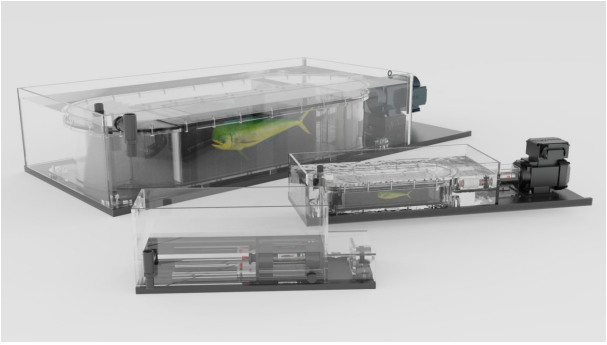
功能特点
一站式方案,包括游泳室和自动化水流速度控制、校准的所有软硬件
不同的规格(Mini、大型及超大型)的游泳室能够满足重量1g - 15kg的鱼类的研究要求
水流速度的调节范围可达0.7 - 200 cm/s
水流速度的控制计算机化的,达到实验要求的准确性
可搭建多通道系统用于高通量实验
特殊定制游泳仪,可全方位视频拍摄或者内置跑步机(用于步行的鱼类或无脊椎动物)
技术参数
系统包含游泳室、自动控制和分析软件、流速校准模块。
游泳室:游泳室可根据鱼的重量、体积选择不同型号的游泳室。
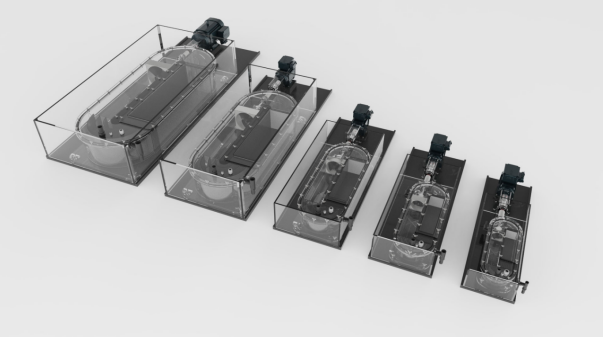
体积 [L]
呼吸室 [cm]
呼吸室截面积 [cm2]
鱼的重量[g]
水速 [cm/s]
占用面积[cm]
电机功率 [kW]
电源
潜水泵流量 [L/min]
0.17
ID 2.64 x L 10
5.47
1 - 4
0.7 - 50
75 x 25
0.046
230 V / 50 Hz / 0.5 A
5
1.5
ID 5.5 x L 20
23.76
4 - 12
3 - 100
136 x 25
0.046
230 V / 50 Hz / 0.5 A
5
5
28 x 7.5 x 7.5
56.25
20 - 80
5 - 125
117 x 40
0.37
230 V / 50 Hz / 3.2 A
10
10
38 x 10 x 10
100
50 - 150
2 - 110
130 x 45
0.37
230 V / 50 Hz / 3.2 A
20
30
46 x 14 x 14
196
175 - 500
5 - 175
147 x 53
0.37
230 V / 50 Hz / 3.2 A
40
90
66 x 20 x 20
400
450 - 1500
5 - 165
188 x 71
0.55
230 V / 50 Hz / 4.8 A
57
185
88 x 25 x 25
625
750 - 5000
10 - 225
227 x 91
4.0
3X360-440 V / 50 Hz / 8.8 A
-
185
88 x 25 x 25
625
750 - 5000
10 - 225
227 x 91
4.0
3X400-480 V / 60 Hz / 8.0 A
-
850
135 x 45 x 45
2025
5000 - 15000
15 - 200
132 x 347
11.0
3X360-440 V / 50 Hz / 30.0 A
-
850
135 x 45 x 45
2025
5000 - 15000
15 - 200
132 x 347
11.0
3X400-480 V / 60 Hz / 30.0 A
-
u 自动控制和分析软件:自动化控制实验,包括实时的数据获取、传感器校准、硬件控制、水环境调节和数据后处理、统计、导出。具备“相位表”功能,可实时显示每个通道的状态、跟踪多通道实验的进程。可跨多个实验进行数据分析和统计,可设定和管理处理组并对不同处理组或者实验进行数据比较和统计。
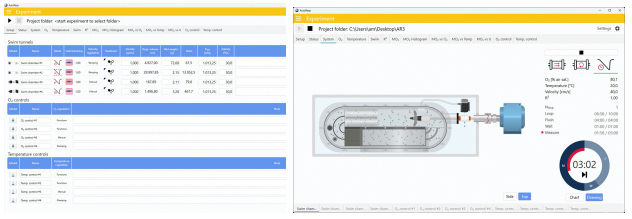
流速校准模块
根据游泳室的类型,流速测量模块分成两种:Mini游泳室选用DPTV流量跟踪系统,通过视频跟踪加入到流动水体里、激光照射下的绿色荧光微球体来测量水流速度;大型及超大型呼吸室选用手持式流速计,包括主机和探头,量程为0.01 - 3 m/s。
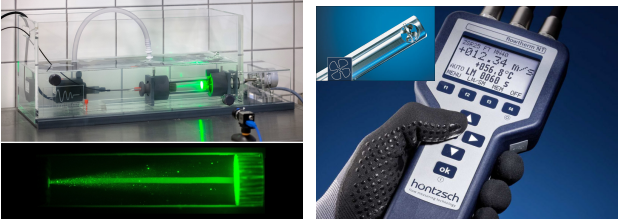
应用案例:
1. 著名的卡罗琳学院的神经科学系在2018年PANS杂志上发表了题为《Adult spinal motoneurons change their neurotransmitter phenotype to control locomotion》的文章,文中使用了5L的游泳室测量了成年斑马鱼的临界游泳速度Ucrit,并利用该系统对其进行游泳训练,用以研究脊髓运动神经元如何通过改变神经元递质表型控制运动。
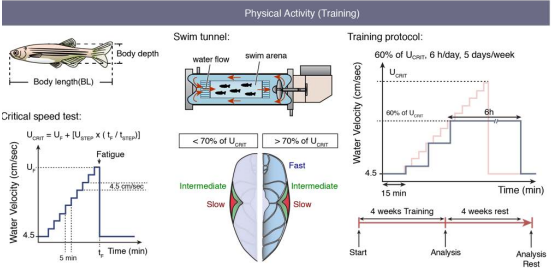
2. 美国国家海洋和大气局(NOAA)西南渔业科学中心的Bjorkstedt为研究海洋酸化和低氧对于幼年岩鱼的游泳能力的影响,使用了90L的游泳室(呼吸室体积70×20×20cm)及流速测量模块。该研究将测量得到的临界游泳速度Ucrit当做综合衡量游泳速度和耐力的指标。为了比较不同体长的鱼的相对游泳能力,使用了BL/sec当作Ucrit的单位。

参考文献
1. Bertuzzi, M., Chang, W., & Ampatzis, K. (2018). Adult spinal motoneurons change their neurotransmitter phenotype to control locomotion. Proceedings of the National Academy of Sciences, 115(42), E9926–E9933.
2. Botha, T. L., Brand, S. J., Ikenaka, Y., Nakayama, S. M. M., Ishizuka, M., & Wepener, V. (2019). How toxic is a non-toxic nanomaterial: Behaviour as an indicator of effect in Danio rerio exposed to nanogold. Aquatic Toxicology, 215, 105287.
3. Brown, D. R., Thompson, J., Chernick, M., Hinton, D. E., & Di Giulio, R. T. (2017). Later life swimming performance and persistent heart damage following subteratogenic PAH mixture exposure in the Atlantic killifish (Fundulus heteroclitus). Environmental Toxicology and Chemistry, 36(12), 3246–3253.
4. Kern, P., Cramp, R. L., Gordos, M. A., Watson, J. R., & Franklin, C. E. (2018). Measuring Ucrit and endurance: Equipment choice influences estimates of fish swimming performance. Journal of Fish Biology, 92(1), 237–247.
5. Perera, E., Rosell-Moll, E., Martos-Sitcha, J. A., Naya-Català, F., Simó-Mirabet, P., Calduch-Giner, J., Manchado, M., Afonso, J. M., & Pérez-Sánchez, J. (2021). Physiological trade-offs associated with fasting weight loss, resistance to exercise and behavioral traits in farmed gilthead sea bream (Sparus aurata) selected by growth. Aquaculture Reports, 20, 100645.
6. Seebacher, F., Borg, J., Schlotfeldt, K., & Yan, Z. (2016). Energetic cost determines voluntary movement speed only in familiar environments. Journal of Experimental Biology, 219(11), 1625–1631.
7. Thomas, J. K., & Janz, D. M. (2011). Dietary selenomethionine exposure in adult zebrafish alters swimming performance, energetics and the physiological stress response. Aquatic Toxicology, 102(1), 79–86.
8. Wen, W., Sun, C., Chen, Z., Yang, D., Zhou, Z., Peng, X., & Tang, C. (2022). Alcohol Induces Zebrafish Skeletal Muscle Atrophy through HMGB1/TLR4/NF-κB Signaling. Life, 12(8), Article 8.
9. Yang, F., Zeng, Y., Huai, W., Zha, W., & Wan, Y. (2022). Responses of cyprinid (Ancherythroculter nigrocauda) to flow with a semi-circular cylinder patch. Journal of Fish Biology, 100(4), 884–893.
10. Zhou, Z., Zheng, L., Tang, C., Chen, Z., Zhu, R., Peng, X., Wu, X., & Zhu, P. (2020). Identification of Potentially Relevant Genes for Excessive Exercise-Induced Pathological Cardiac Hypertrophy in Zebrafish. Frontiers in Physiology, 11.
- 产品优势
- 游泳行为是鱼类最基本的生命活动, 是其逃避敌害、猎食、迁徙、求偶和躲避灾害环境的重要手段。衡量鱼类运动能力的一项重要指标是临界游泳速度Ucrit,它与鱼类的生存和捕食成功概率有密切关系。鱼类游泳能力研究系统广泛用于Ucrit测试、游泳行为、强迫运动、鱼游运动等方面的研究。







 VIP会员
VIP会员
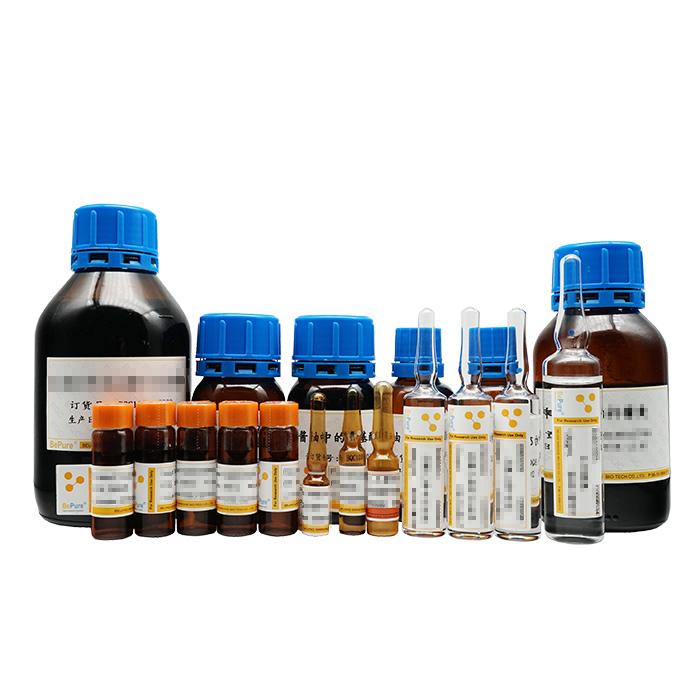
 粤公网安备44196802000105号
粤公网安备44196802000105号